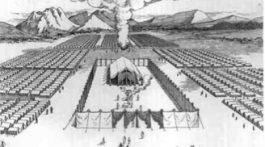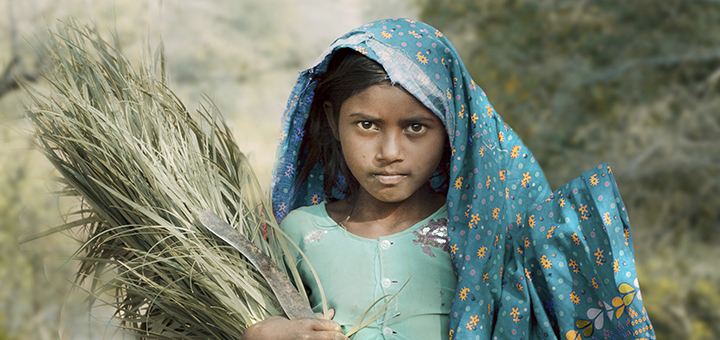Solemn silence swept across the congregation as Doug Dworak spoke. Choked by emotion, he told us how Tiny Hands International rescued girls from a horrific life in the sex trade. Many of those girls were 11 years old—or younger.
“That’s the age of my granddaughters,” he sighed. “What would I do if those men were doing this to my granddaughters?”
That’s how old I am. Terror struck at my heart. What would I do if that happened to me?
I couldn’t get the image and feelings out of my mind. I imagined living in a village with my family in total poverty. The stress of trying to feed all the little mouths would be overwhelming. A man comes to the village, promising me a good marriage or a steady job. Money. Money for all those little mouths. How selfless, I thought.
And then, after this man who promises hope—this man whom the girl trusts—gets her out of the village, he probably rapes her. Trust shattered, the girl might think of running; her next thought is more sobering. Even if I ran, who would take me in? My family, my village, won’t take a girl like me back. So she stays with him, crosses the border from Nepal into India, and finds herself trapped forever in a hell where rape is a daily reality, where pain and torture become normal. Fresh air, sunshine, the village: these all become fading memories.
The hope that Tiny Hands offers is interception at the border. Tiny Hands has more than 20 border monitoring stations where a staff member watches the traffic and identifies suspicious persons. If the staff members think a girl is being trafficked, the local police are called in. Rescued girls are taken to safe homes, and Tiny Hands contacts their families. If the family will take their daughter back, and if she wants to return, Tiny Hands provides safe transportation back to her village. But sometimes, girls can’t return home. If so, they’re placed in a women’s center, where they receive counseling, Christian discipleship, and skills training so that they can eventually provide for themselves.
Soap for Hope
Even as an 11-year-old, I could see how important Tiny Hands International’s work was. My little heart was breaking for the girls, and I wanted to do something that would help them find hope. I wanted to support Tiny Hands, but I had no income to share with them and no ideas for any other kind of donation.
Not long after Mr. Dworak spoke to my church, I had an idea that I shared with my dad.
“Hey, Dad?”
“Yes, Anna?”
“You know that soap making kit I got for Christmas? Do you think I could sell soap and give all the money I make to Tiny Hands?”
Dad thought for a second, and then replied, “That’s a great idea! I’ll help you set up a website this weekend.”
Before long, friends and family were ordering my soap. Many of them had never heard of Tiny Hands before. Within two years, I made almost $400 for Tiny Hands; a lot of money to a now-13-year-old. Enough money, in fact, to save about 40 girls like me from a living hell.
When I was 15, my market disappeared. The economy took a downturn, and four dollars for a bar of soap was suddenly too much, even if all the profit went to a good cause. What can I do now? I can’t let those girls down. I’ve got to keep helping them somehow.
Another Idea
A few weeks later, I was eating lunch with one of the teachers at the homeschool co-op.
“Oh, Anna,” she complained, “next week I’ve got parent/teacher conferences all evening! I don’t know when I’ll find time to eat, and then it will be just another sack meal.”
When I saw my mom that night, I told her what my teacher said.
“Mom, it doesn’t seem fair that they have to teach all day, and then they don’t get a supper. I think the administration should provide a meal for them.”
“I’m sure they would appreciate that, dear,” said Mom thoughtfully. “You’re a good cook; you could provide dinner for them.”
Mom’s words made me think. What if I made dinner for the teachers and asked them to donate to Tiny Hands in exchange? Could it be possible that in serving my teachers, I could also serve the girls in Nepal?
That very week, I emailed a dinner order form to all the teachers. I suggested a $10 donation to Tiny Hands International and included information about what Tiny Hands did in Nepal. The response from the teachers overwhelmed me. Teachers, board members, parents, and even students ordered meals from me. Everyone gave at least $10 to Tiny Hands; some even gave $50. Those who ate my food complimented my cooking skills, but also shared how blessed they were to have a hot, homemade meal.
Little Offerings
John 6:1-14 documents the story of Jesus miraculously feeding over 5,000 people. What stands out to me is not so much the magnitude of the meal, but its humble beginnings: a boy’s sack lunch.
I don’t think the disciples were combing the crowd, asking everyone if they had any food to eat. Instead, I like to think that the boy climbed up to where Jesus and His disciples were, holding out his bread and fish, wanting to share. Jesus took the boy’s meager offering and transformed it into a blessing that reached many.
My offering to Tiny Hands was like the boy’s little meal. Meager. But our attitude was the same. We both asked, “How can I help these people?” We looked at our skills, our talents, our possessions, and decided to give away what we could. Jesus, in His grace, accepted our little sacrifices and multiplied them to bless a multitude. No matter how few your skills, how little your time, or how tiny your hands, God can use you to make a difference.
Some day, I want to meet the girls. I want to see them, hug them, tell them I love them. Most of all, I want them to understand that my money didn’t save them, nor did Tiny Hands. The One who saved them was Jesus. He was simply gracious enough to use a girl like me.
This article was also published in the February 2015 print edition of OUTLOOK, our annual special issue written and designed by Union College students. It was written by Anna Auger, a sophomore language arts education major from Lincoln, Nebraska. The print version was designed by Harry Smith, a senior public relations and emerging media major from Lincoln, Nebraska; and Sara Altsman, a junior communication major with a public relations emphasis and minor in graphic design from Kansas City, Missouri.









